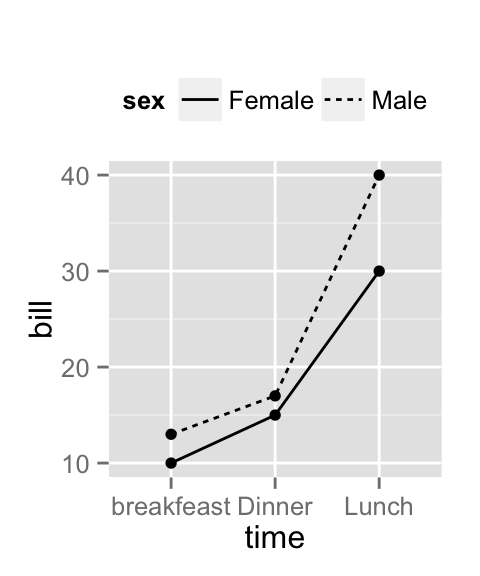
It’s basically the same process but instead of using hjust you will need to use vjust to adjust the label position.
R GGPLOT PLOT RENAME X VALUES HOW TO
To finish off this post, let’s have a quick look at how to label a vertical bar chart. In my opinion you should never have an axis and labels in the same plot. Furthermore, I removed the axis labels and grid lines. That way is was super easy to get the subtitle in italics. In addition, I used my mdthemes package which provides themes that interpret text as markdown. Notice how easy it was to highlight a single bar thanks to ggcharts. Mdthemes ::md_theme_classic (base_size = 14 ) + Title = "Top 10 Most Dreaded Programming Languages" ,Ĭaption = "Source: Stackoverflow Developer Survey 2019" ) + Y = "Developers Who are Developing with the Language butHave not Expressed Interest in Continuing to Do so" , Geom_text (aes (label = label, hjust = -0.1 ), size = 5 ) + Best of all, you shouldn’t have too much trouble changing the scale since most of the process is relatively straightforward.ĭo you prefer default or custom axes in R? How often do you change your axes? Have you ever created a custom axis? Let us know in the comments section below.Mutate (label = sprintf ( "%1.1f%%", pct )) %>%īar_chart (language, pct, highlight = "R", bar_color = "black" ) + It allows you to present your data clearly with appropriate labels, tick marks, and other essential elements. Modifying the scale of your X and Y-axis opens up new possibilities in R. As the name suggests, it’s used for axis transformation.


How to Change the X and Y Axis With the Scale Functions? Type in “ yaxt="n"” to suppress the Y axis.Type in “ xaxt="n"” to suppress the X axis.Type in “ axes=FALSE” to suppress both axes at once.When creating custom axes, you may want to consider suppressing the axes automatically generated by the high-level plotting function. In addition, zero suppresses the ticks while 1 creates the gridlines (-0.01 is the default value). Negative values are outside the graph, whereas positive numbers are positioned inside. tck – the length of your tick mark represented as a fraction of the plotting region.las – this specifies whether the labels are perpendicular (=2) or parallel (=0) to the axis.

col – the color of the tick mark and line.pos – this is the coordinate for drawing your axis line (i.e., the value where it crosses the other axis).labels – a label vectors that will be placed at your tic marks (if it’s zero, the program will use the at value).at – a vector that indicates where the tick marks will be positioned.You may have already heard of ways to put multiple R plots into a single figure - specifying mfrow or mfcol arguments to par, split.screen, and layout are all ways to do this. I would like to be able to override the x labels from the data frame with my own labels OR decide the order of the values along the x axis.

side – the side of your graph where the axis will be drawn (4 – right 3 – top 2 – left 1 – bottom) While ggplot2 has many useful features, this post will explore how to create figures with multiple ggplot2 plots.Here’s what each component inside the parentheses means:
R GGPLOT PLOT RENAME X VALUES CODE
It makes the code more readable by breaking it. The + sign means you want R to keep reading the code. Inside the aes () argument, you add the x-axis and y-axis. This is what the most common template looks like:Īxis (side, at=, labels=, pos=, lty=, col=, las=, tck=, …) library (ggplot2) ggplot (mtcars, aes (x drat, y mpg)) + geompoint () You first pass the dataset mtcars to ggplot. Naturally, you’ll need to use the axis function. Besides modifying the X and Y axis scale, R also enables you to create your own axes.


 0 kommentar(er)
0 kommentar(er)
